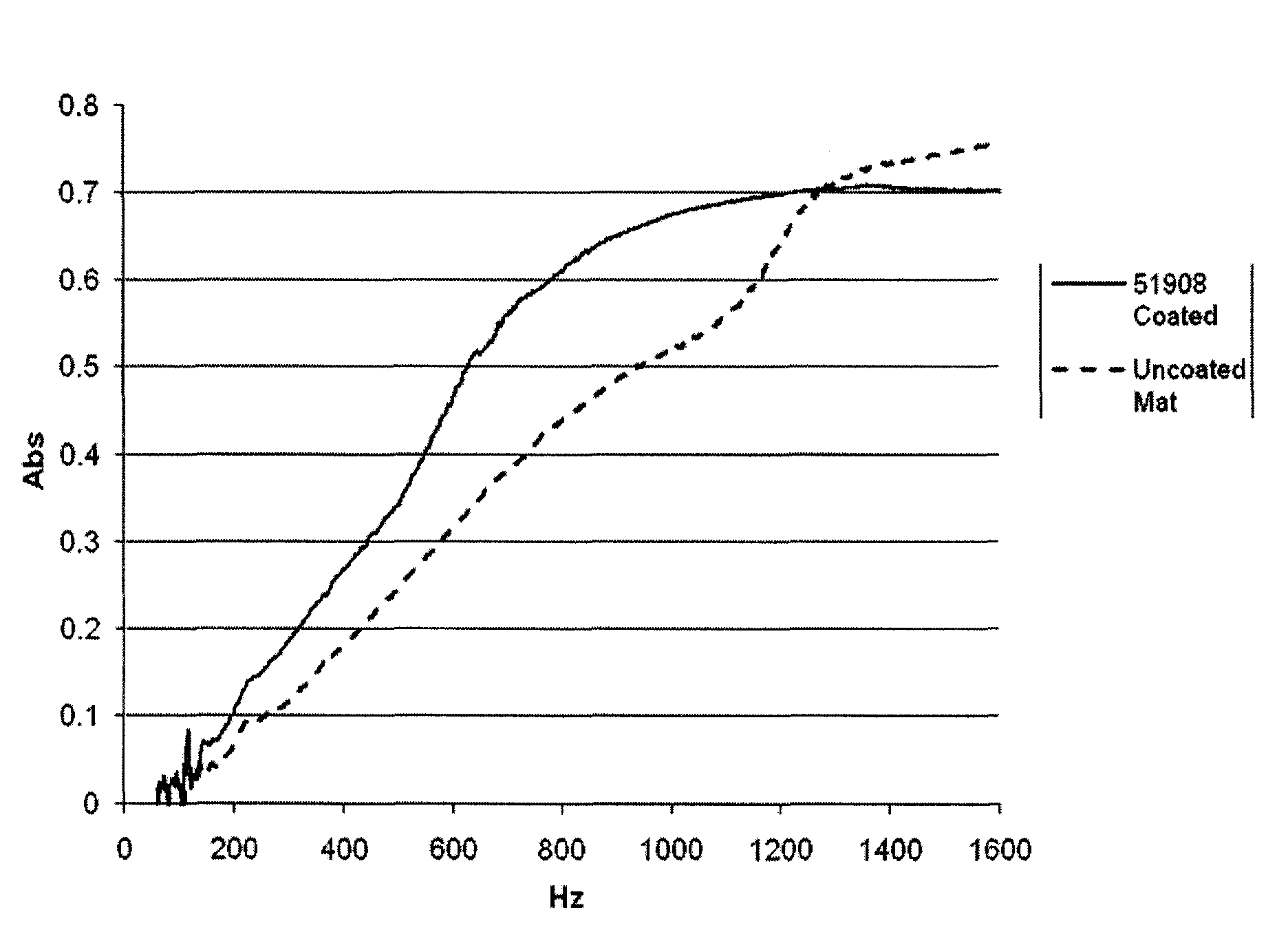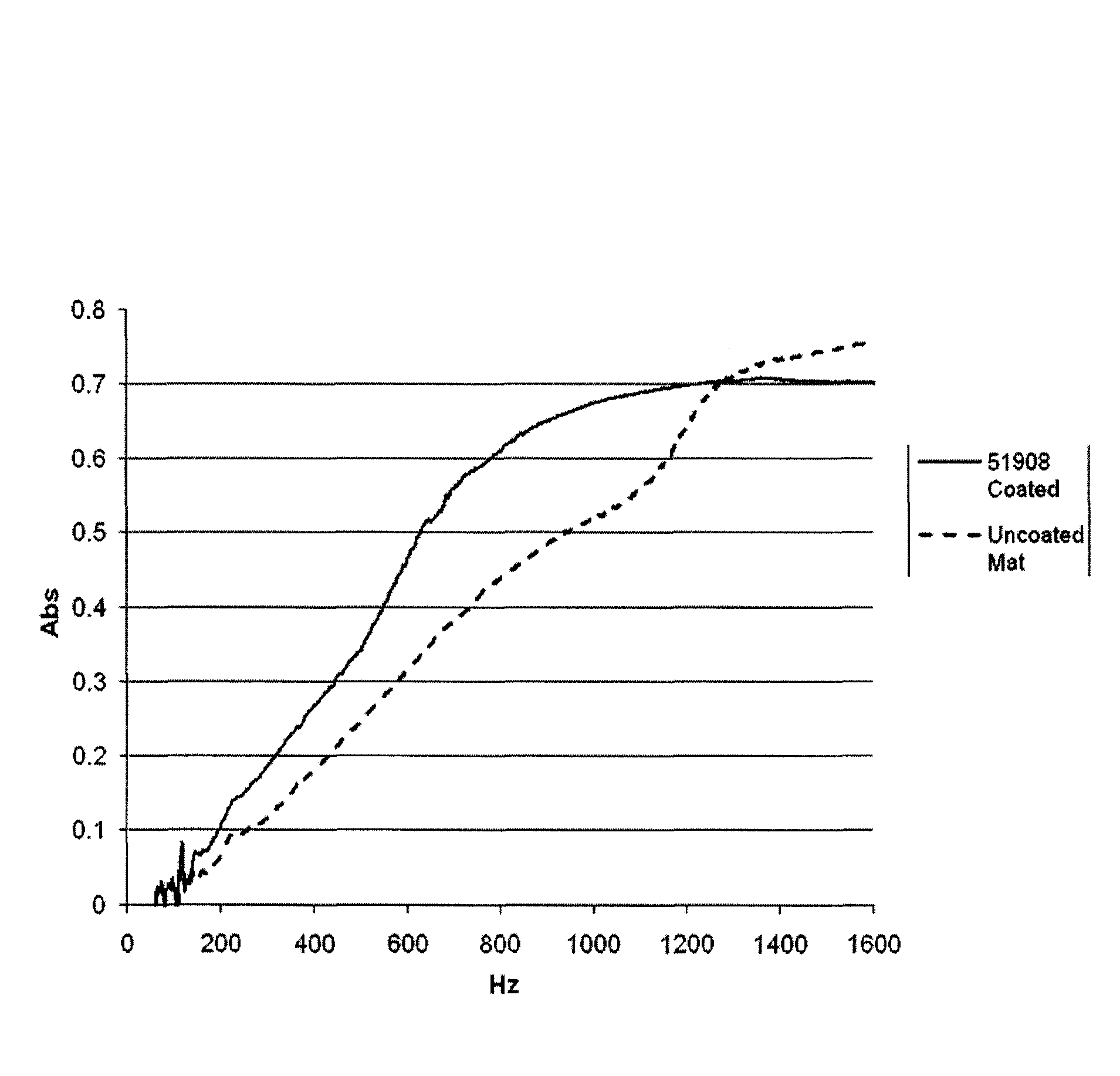Tunable acoustical plaster system and method of making it
a technology of acoustical plaster and acoustical panels, applied in the direction of ceilings, solid waste management, flooring, etc., can solve the problems of difficult to find quiet interior spaces, not being accepted as providing an aesthetically pleasing appearance, and being seldom used in the main living area, so as to save raw materials and services, save time, and save costs
- Summary
- Abstract
- Description
- Claims
- Application Information
AI Technical Summary
Benefits of technology
Problems solved by technology
Method used
Image
Examples
example 1
[0034]A coating was prepared by combining the components of Table I in the amounts listed demonstrating the ability of our coating to tune the acoustical properties.
[0035]
TABLE ICOATING COMPOSITIONComponentTrade NameAmountPercentageRheologicalSuper Gel B56 g.2.3%ModifierColorantDCS ®13.6 g.0.5%StarchSTARPOL ® 1638.2g.0.3%BinderHP 41-830108 g.4.3%CarrierWater1988.6 g.79.1%FillerRYOLEX ® 39338.6 g.13.5%Perlite
[0036]The coating was applied to the same mineral fiber basemat in subsequent layers as shown in Table II. The applied coatings were prepared by adding 130 g water to 1698 g of the coating of Table I. The first layer was applied to the basemat, resulting in a thin coating. This sample set is designated as Sample No. 061108B. A second coating was applied once the first coating was dried to produce the sample set designated as Sample No. 061108A. After the second coating was dried, a final coating was applied and the sample set designated as Sample No. 031108. The sound absorption ...
PUM
| Property | Measurement | Unit |
|---|---|---|
| particle size distribution | aaaaa | aaaaa |
| particle size | aaaaa | aaaaa |
| particle size | aaaaa | aaaaa |
Abstract
Description
Claims
Application Information
 Login to View More
Login to View More - R&D
- Intellectual Property
- Life Sciences
- Materials
- Tech Scout
- Unparalleled Data Quality
- Higher Quality Content
- 60% Fewer Hallucinations
Browse by: Latest US Patents, China's latest patents, Technical Efficacy Thesaurus, Application Domain, Technology Topic, Popular Technical Reports.
© 2025 PatSnap. All rights reserved.Legal|Privacy policy|Modern Slavery Act Transparency Statement|Sitemap|About US| Contact US: help@patsnap.com


